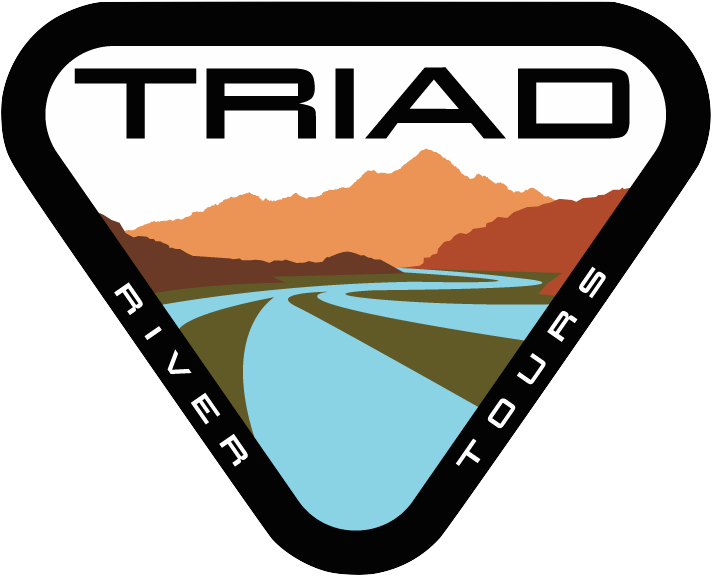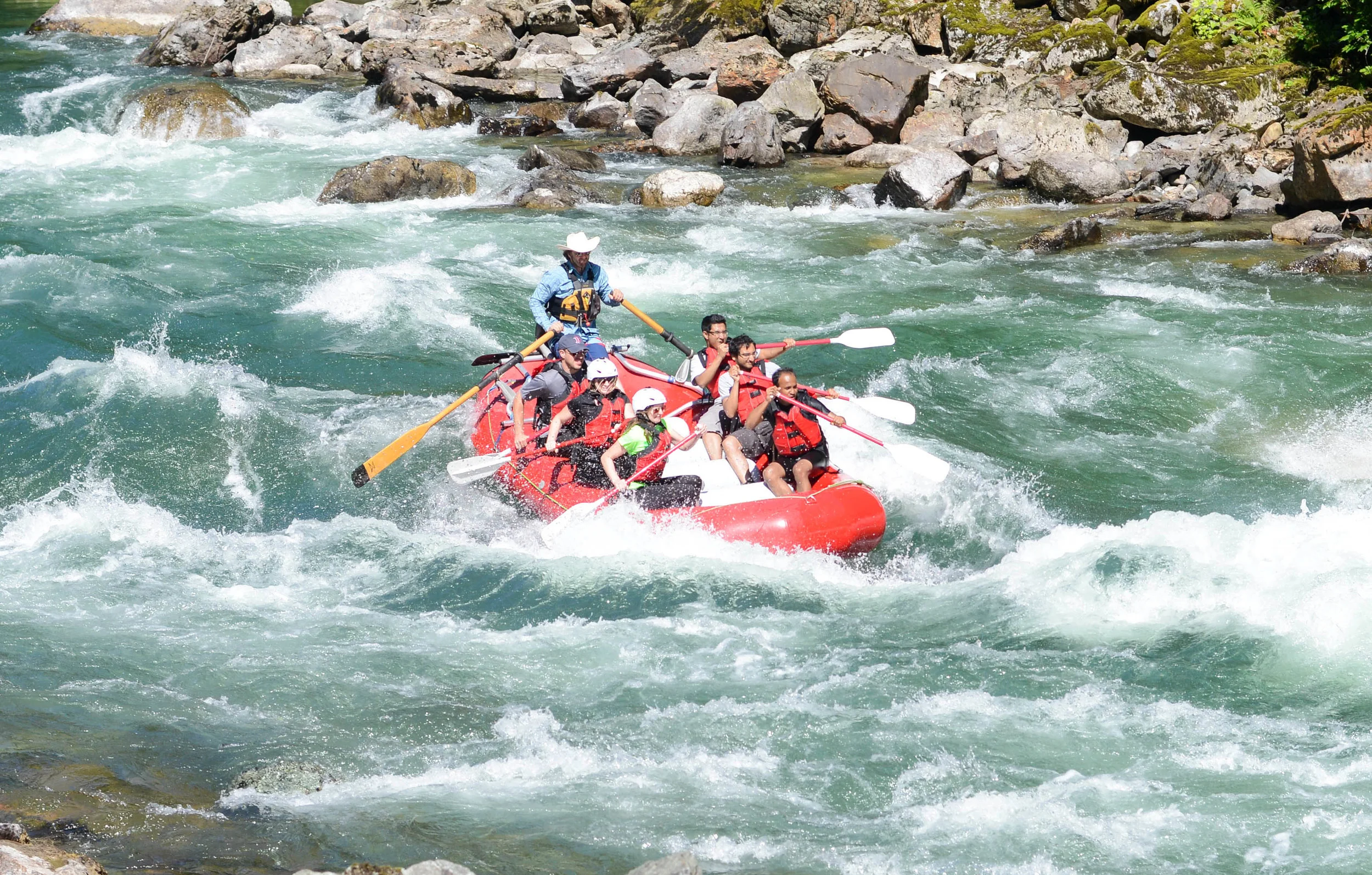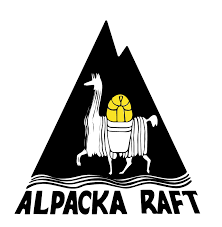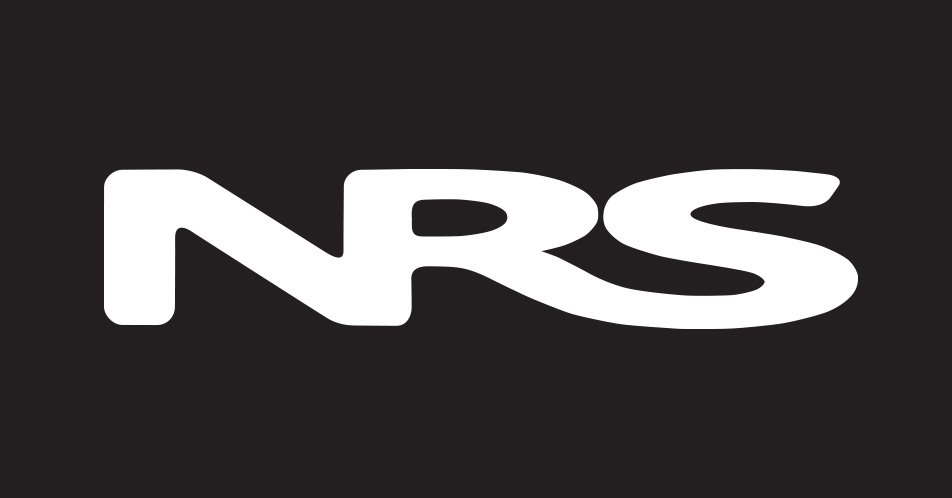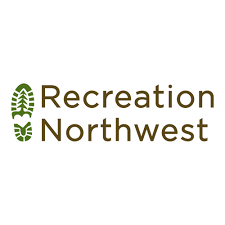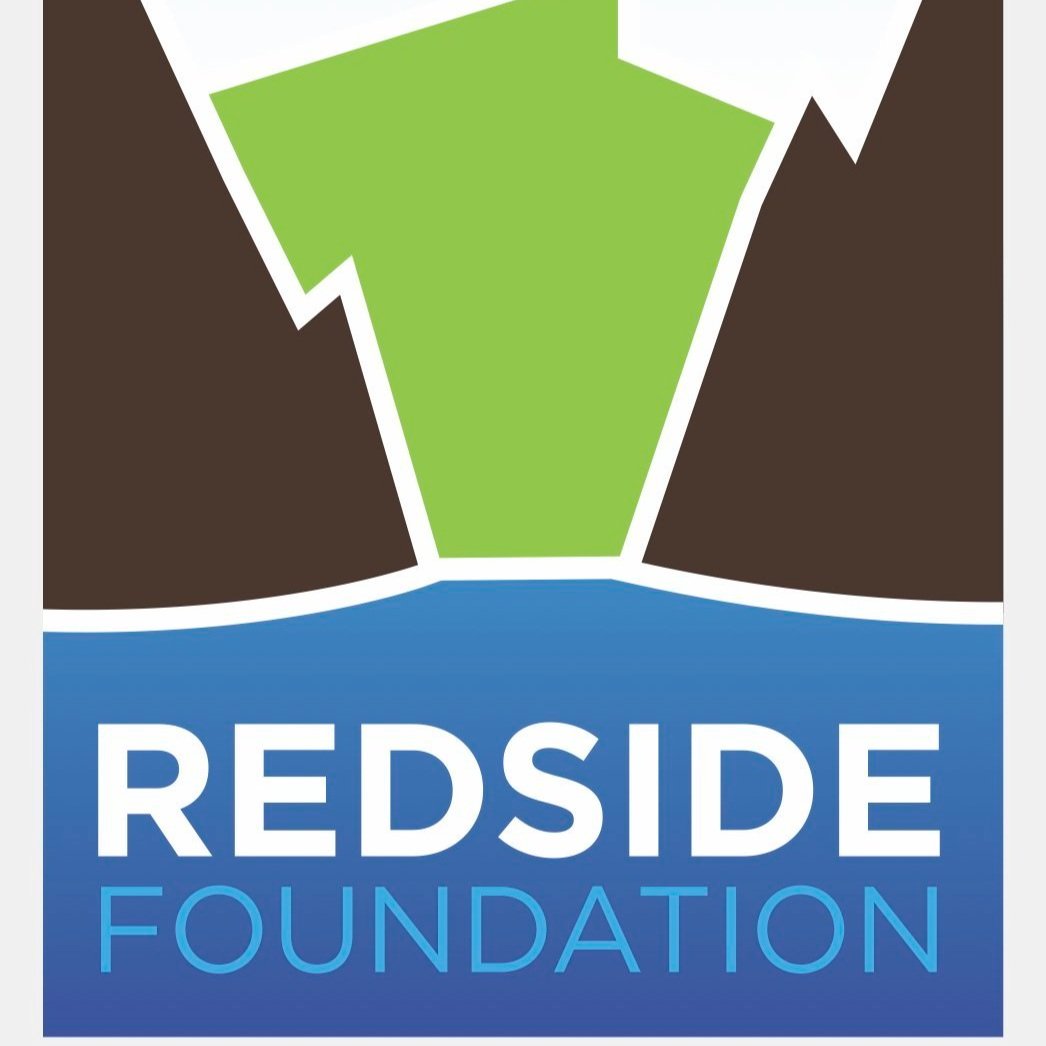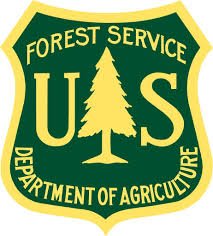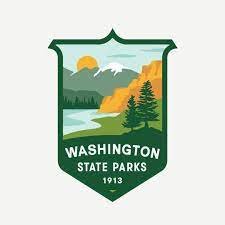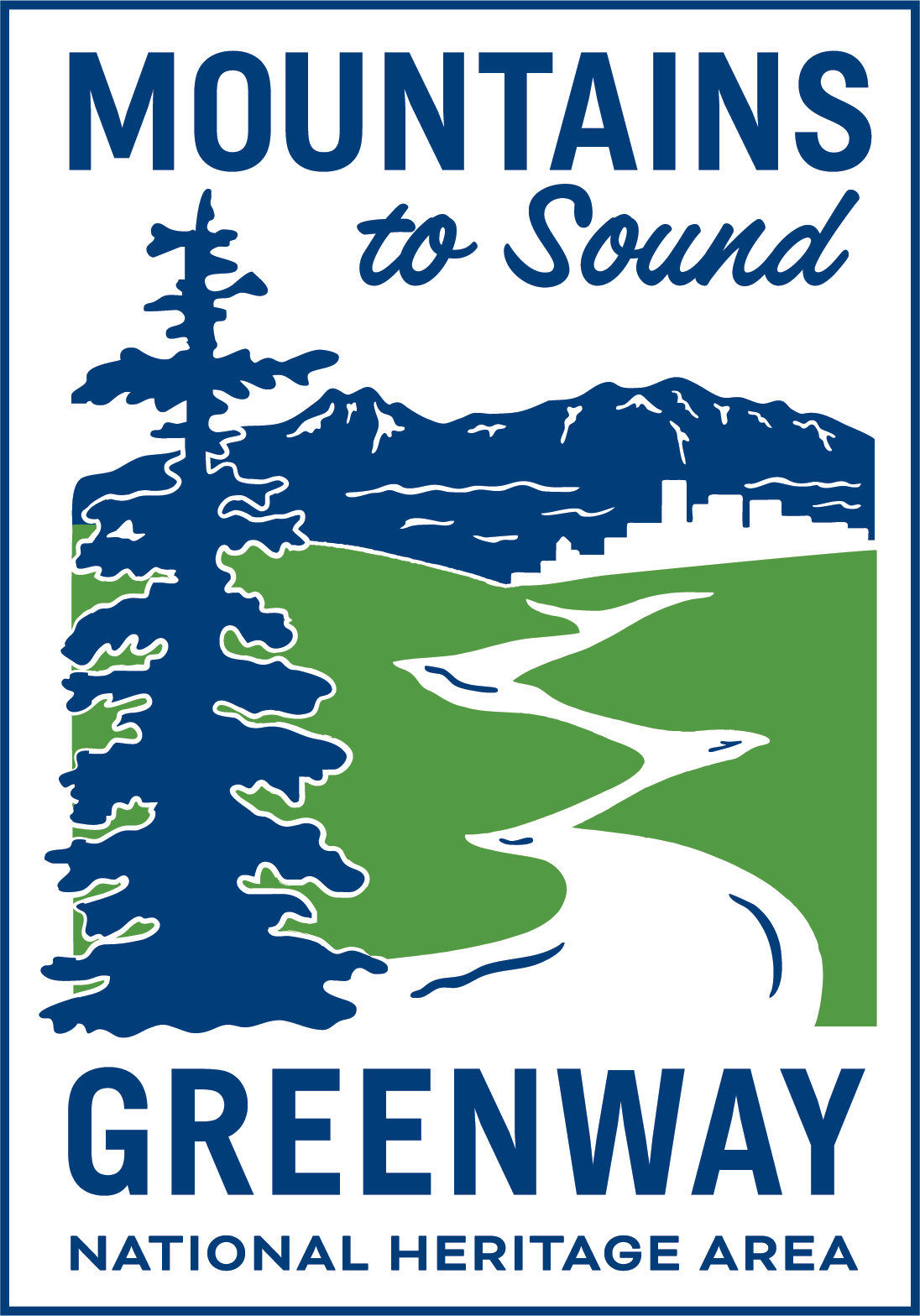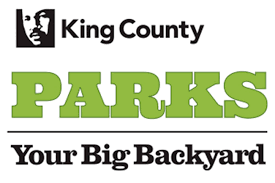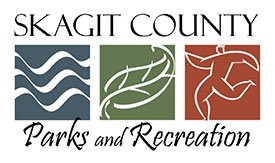The 14 foot raft is, to the whitewater river rafting industry, the swiss army knife of rafts. The 14 foot raft carries 6 people plus a guide with ease, and can be configured to carry 7 people plus a guide or a stern mount paddle assist in the rear, with 6 paddling guests, with ample paddling room between them, to create a truly dominant whitewater craft in both big and technical river rafting conditions.
Here in Western Washington we often opt for the more slender 13 foot raft because we typically have larger 15 or 16 foot rafts for early season rafting conditions, and use the smaller rafts exclusively for lower water conditions. A 13 foot raft edges out the 14 footer because it’s slightly narrower and more suited for the task in more technical water, but across the world, many companies run their entire fleet based on one 14 foot design, and as far as rafting with groups of 6 river guests, the 14 footer is the standard.
We certainly have not had enough rafts in this category to proclaim that we have done a full comparison. Popular and undoubtedly proven rafts in the 14 foot category are omitted from this list simply because we do not have experience with them. Still, we feel it may be useful to share with you our in house comparison of all of the 14 foot rafts we have used. Just like our other analysis, the most important factor is usability in the conditions facing the guides; that is to say, we pick first the raft that the guides like the best and gives our guests the best ride in the river rafting conditions that the raft was designed, and thus we intend to use it for. Next, we consider the cost vs. value of the raft. If the raft is fantastically designed but made of an inferior material, we are going to grade it down (especially considering that for commercial use the rafts are going to get some serious mileage in a short time). The last metric we use is if the guests can tell a difference. Here, how the raft looks and feels to our guests will influence our grade, but far less than the other two metrics. Onward! All Forward!
1. Maravia Williwaw 1
2. Maravia Ranger
3. NRS E-142
4. Aire 143D
5. NRS E-140
6. Maravia Diablo
7. Aire 143R
8. Super Duper Puma
Super Duper Puma
The Aire Super Duper Puma. Source: http://www.aire.com/aire-raft/super-duper-puma.asp
The Super Duper Puma is the equivalent of a long bed pickup with a 4-door crew cab. It’s essentially a Super Puma stretched out to another foot without adding a whole lot of width. The raft is incredible for certain, highly specific river conditions. It carries 6 people with much more ease than does the Super Puma, but in technical water simply does not hold a candle to it’s smaller sibling. The Super Duper Puma is, also, very similar to the Aire 143D, but narrowed down to fit tight slots. Looking at this design from that angle gives it perhaps a more fair comparison; the raft can drop tight slots with 6 people. Kind of like the hilariously named “Hot Dog Bun” raft made by Hyside, the Super Duper Puma is capable of extending the seasons of raft trip outfitters that operate on rivers where the river channels out between boulders creating tight slots that the guides have to fit through, and if you run it with too wide of a raft you will simply pin there dangerously and embarrassingly. The Super Duper Puma flips much easier than a 143D and is not adept at running the same kind of big waves that it’s larger sibling does. It is, in just, the largest of the Puma line, and offers incredible value, being significantly cheaper than the 143D (and priced closer to the Super Puma. The SD Puma is also proven as a center mount raft in big water; perhaps this is where the design functions most impressively. If you can rig one of these rafts with a center mount frame, or a fishing setup for fly fishing on coastal streams, and keep the weight down, it still turns well, and has a design that is reminiscent of a driftboat. The SD Puma just didn’t fit out system like the 143D, and that’s why it’s at the bottom of our list… it’s a specialized design, and for those who have the right situation; it can be made to be a perfect raft in the right system.
Aire 143R
It is difficult to be placing one of the most popular whitewater river rafts in the USA as our second to last favorite boat. The 143R, which we ran for a full season, produced a resounding, “what do we do with this boat” response from our guides. It has the width and stability of larger rafts, per the norm of the R (round) series, by Aire. The 143 is a perfect size for 6 people, and when coupled with a stern mount frame and oars, ran big water very well. So why is it so low on the list? Simply because with the sluggishness that it has, it’s better to run a 15 foot raft. The 143R is big, and on the river it feels heavy and carries it’s momentum and is thus hard to turn. For us, we already have larger rafts for big water conditions, so a 14 foot raft that doesn’t turn well is a death sentence. The 143R would be a great choice for a private rafter and 2-4 people plus gear on a 3-4 day multi-day rafting trip. It is very stable, and predictable. For us, as a paddle raft, it just didn’t cut it.
Maravia Diablo
The Maravia Diablo whitewater raft. Source: http://www.maravia.com/index.php/main/product_detail/153/7
The Diablo is another raft that is perhaps surprisingly low in our comparison. Chris Frazee at Maravia, sent us over two of these during one of our seasons and we got a lot of use out of them. The raft design looks, on land, like it’s fast, sleek, and would turn on a dime. We have even asked guides at other companies that use the Diablo (it is perhaps the most popular Maravia raft design in Washington as far as commercial rafting use), and they all feel that it turns well. We can’t figure out why guides at other companies have had such a different experience than our staff did, but here’s what we found.
The Diablo is essentially a Ranger with diminishing tubes, or you could also look at it as a Williwaw design that has been narrowed and added to it diminishing tubes. It can be used as a stern mount raft, and perhaps does better as such, for technical rivers. The diminishing tube front doesn’t overly splash the front paddlers, and the tubes are grippy for paddlers butts. The Diablo doesn’t flip as easily as one might expect, and it handles big water well. The issue? Fully loaded with a paddle crew and one paddle guide, the Diablo doesn’t turn well in technical water. There is a certain squareness to the footprint that the raft has on the river; there is, thus, a bit of a drag coming from the corners of the raft when quick turns are made. Conversely, if you think about the Aire 143D, an almost identical raft design from a proportions standpoint, these corners don’t exist. This might seem like a detail, and it is, but it’s enough to drop the Diablo to the bottom of the list because it simply doesn’t have the needed leverage to turn in technical rafting conditions, and if used with a stern mount frame, we prefer the design of the Ranger (essentially the same raft as a Diablo but without diminishing tubes).
NRS E-140
The NRS E-140 self bailing whitewater raft. Source: https://www.nrs.com/product/1085/nrs-e-140-self-bailing-rafts
The NRS E-140 is a stout little boat. It’s the widest 14 foot raft that we have ever tried, and its large tubes and wider stance make it a big water favorite. The E-140 isn’t flippy, but once upside down you better be on your game or have some kind of flip line rigged to the bottom of it, because it’s tall. Staring at the E-140 from the river, it looks impossible to climb on top of. It’s as stable as a 15 foot raft, and it rides high in all conditions. The E-140 is thus a little bit of a “tweaner” because it’s an amazing gear hauler, similar to our 15 foot raft designs (we use the Maravia Williwaw 1.5 which has the same 7’ width as the E-140), it offers no benefit as a paddleboat in technical water or rapids with tight slots. Thus, the E-140 is an excellent private boater raft, as it excels with a centermount. It’s also proven as an R2 raft despite being huge for the task; as long as you’re ready to throw in a high side, the E-140 will get two people down river in style. The E-140 doesn’t fit our purposes mainly because it just doesn’t have the sporty factor as other designs. For the same money we can be running the NRS E-142, which is more adept at 6 load paddle crews.
Aire 143D
Aire 143D whitewater raft. Source: http://www.aire.com/aire-raft/143D.asp
The Aire 143D whitewater raft is a different animal altogether than the Aire 143R when it comes to on the river performance. The 143D is fast, turns well as a straight paddle raft, and the design seems to be able to handle lower water as well as river conditions that demand stability in big waves and holes. The 143D is used by several commercial whitewater rafting companies in the Pacific Northwest. The designs rigidity makes it a nice raft to take over Husum Falls on the White Salmon River, and the continuous rocker make it fun to take down chutes and technical sections like the Sauk or Nooksack in lower water. The 143D is probably the most versatile design for Washington whitewater; it works well as a paddle raft or as a center mount oar rig. The D series as a whole doesn’t do well with a stern mount frame; it’s simply too low to the river to be effective, and guides are constantly getting punched in the ribs by their oars which, due to the diminishing tube design, are positioned with the handles right in front of your rib cage. The 143D is not a stern mount raft design. The other drawback of the design is that it is a very wet raft, and in river conditions like that on the Skykomish’s Boulder Drop the 143D can “spear” into the river when going over steeper drops. We wouldn’t go so far as to call the 143D a “Class 4 raft” as it’s clear that it’s capable of running bigger water and larger waterfalls, but only when there is a smaller crew of more experienced paddlers. The design works exceptionally well for our rivers, and if a private boater wants to run multi-day trips on the Rogue River, the Middle Fork Salmon River, and then have a fun playboat to use on coastal rivers with friends and family for a day of paddling; the 143D is hard to beat as a versatile all around raft.
NRS E-142
The NRS E-142 whitewater raft. Source: https://www.nrs.com/product/1084/nrs-e-142-self-bailing-rafts
The NRS E-142 is a hidden gem among the NRS raft lineup. It fills an important void left behind by the bolstered, overly stable, ant-sporty, wide as a trailer house E-140. The E-142 is a more classic design than the 140, and it handles Western Washington whitewater better. It isn’t as stable as the 140, but it paddles better, and has a more pronounced bow and stern, making it an excellent raft for steep drops. The E-142 isn’t the gear hauling monster that the 140 is, but it does well as a center-mount raft, and excels as a fishing craft. The lines of the E-142 are very similar to that of the Maravia Ranger, albeit slightly narrower. This is a raft that we really loved, and was difficult to move on from. Had Triad River Tours opted to build a fleet with 14 foot rafts, it’s likely that the NRS E-142 would have been the one. We also feel it important to note that we have not tried the Sotar ST ’14 nor have we tried out the Hyside 14 foot rafts; both of which have design factors very similar to this one; it’s possible that we would have loved all of them, but since the E-142 is the one we have had on several whitewater rivers in Western Washington, it’s the one that we recommend highest of all of the NRS boats in it’s class.
Maravia Ranger
The Maravia Ranger whitewater raft. Source: http://www.maravia.com/index.php/main/product_detail/156/3
The Maravia Ranger 14 foot raft is almost identical in proportions to the Diablo, but performs drastically differently. The Ranger is unique in that it handles steep drops incredibly well, can fit into narrow shoots, and can be used equally well as a straight paddle raft, or as a stern mount paddle assist. The Ranger has been used by outfitters on technical rivers like the Payette, and can also be seen in videos of running the Main Salmon River at 80,000 cfs. The Ranger is a performance marvel because it’s upswept bow serves as an excellent casting platform for fly fisherman; it is thus incredibly versatile and for Western Washington rivers, where we do not need excessive splash from the frigid glacial river water, the high rocker design is excellent for running technical and steep rivers. The Ranger is not as adept at being configured into a multi-day system as the bow catches the wind like the Santa Maria; the ranger is also not a common design, so if you want one the used market essentially doesn’t exist. Buying one is usually a special order from Maravia (especially if you want a specific color), and you’re probably going to have to go into it blind. Triad River Tours was unable to get a Ranger demo raft, but our guides have used them while working for other companies, and this review is based in rafting experience on commercial rafting trips. The Ranger is also a fairly expensive niche raft… why it isn’t more popular is hard to figure.
Maravia Williwaw 1
The Maravia Williwaw 1 Whitewater Raft. Source: http://www.maravia.com/index.php/main/product_detail/158/3
Years ago one of our guides was in conversation with the would-be president of Maravia, Chris Frazee. Chris was asked what the ultimate raft was in the Maravia lineup and he right away responded that the Williwaw 1 was their best, most versatile raft for private rafters for all purpose paddling. This is somewhat shocking considering the diminutive design in comparison to the rest of the Maravia raft lineup (the Williwaw series essentially starts with the 1 and gets bigger from there). The Williwaw 1, nonetheless, is quite simply the perfect all around boat. It is at home as a centermount gear hauler on multi-day rafting trips. It does well as a stern mount raft on difficult rivers like the Lochsa or Skykomish, and it is a great paddle raft and has been proven as a fleet raft for large commercial whitewater rafting operations on Eastern Rivers. It’s not cheap, but there are more Williwaw 1s out in the used raft market than any other Maravia model. Thus, the Williwaw 1 is an easier investment for the private rafter to make because of resale value and ease of resale. The Williwaw 1 has a classic design, and perfect proportions as far as width and length, and the 20” tube has to be considered the best tube diameter for paddlers. The raft offers great splash, it turns easily even when weighed down with 6 paddlers, and just offers something for everyone. The Williwaw 1 is our favorite raft. We use it’s larger sibling, the Williwaw 1.5, for most of our commercial whitewater rafting activity, but give a nodding glance to the similar 14 foot model, and feel it’s the best overall choice for Western Washington Whitewater rivers.
Read more:
